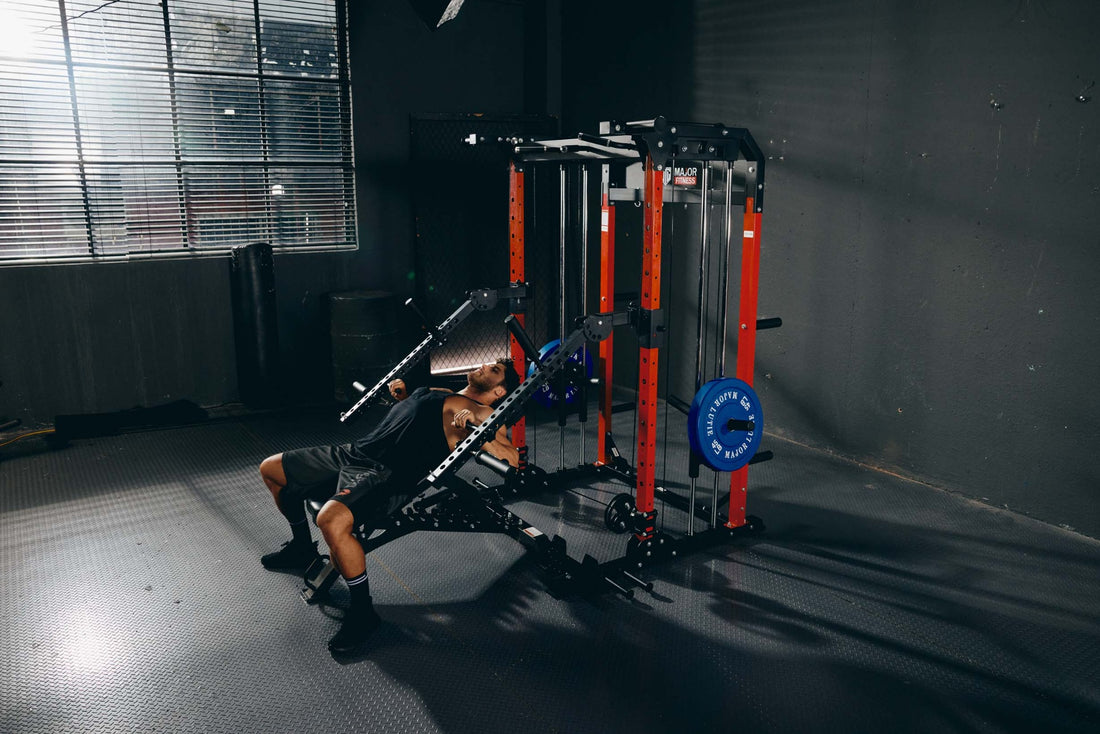
Embarking on a fitness journey or elevating an existing routine involves understanding the equipment you work with, especially when it involves weightlifting. A pressing question often arises among gym-goers and fitness enthusiasts: How do you count weight on a Smith Machine? This guide is designed to shed light on this common query, providing you with the insights needed to accurately measure and record the weight you lift, ensuring both an effective and safe workout experience.
Understanding the Smith Machine
Before diving into the mechanics of counting weight on a Smith Machine, it's essential to first understand what distinguishes this equipment from free weights and traditional squat racks. Unlike free weights that offer a full range of motion, a Smith Machine consists of a barbell fixed within steel rails, offering a controlled movement. This unique feature assists in maintaining form, especially for beginners or those rehabilitating injuries, but it also alters the way weight is perceived and recorded.
The Mechanics of Counting Weight
Counting weight on a Smith Machine involves understanding two main components: the weight of the bar itself and the weight plates you add. It's crucial to note that the barbell on a Smith Machine often weighs less than a standard Olympic barbell, typically around 15 to 25 pounds (6.8 to 11.3 kg) as opposed to 45 pounds (20.4 kg). However, this can vary depending on the make and model of the Smith Machine. Another factor that significantly impacts how weight is counted is the mechanism of the machine, which can include counterbalances or other systems that reduce the effective weight of the bar.
Accurately Measuring Weight
To ensure accurate weight tracking on a Smith Machine, start by determining the weight of the bar itself. This information can usually be found in the user manual or directly from the manufacturer. Once you've established the bar's weight, the next step involves adding weight plates. Here, it's crucial to use the same approach as with free weights, ensuring the added plates' weight is evenly distributed on both sides. Subsequently, if the machine includes counterbalances or other mechanisms that affect the bar's weight, try to obtain this information to adjust your weight calculations accordingly.
Maximizing Your Workout
Understanding how to count weight on a Smith Machine doesn't just influence how you track progress; it directly impacts the effectiveness and safety of your workout. By accurately measuring weight, you can ensure you're lifting within your capabilities, reducing the risk of injury. Additionally, this knowledge allows you to set and achieve realistic lifting goals, an essential aspect of any fitness journey. As you become more familiar with various machines and equipment, including the Smith Machine, you empower yourself with the tools needed to elevate your fitness regimen responsibly.
Tips for a Successful Smith Machine Workout
- Start with a Warm-Up: Always begin your workout session with a thorough warm-up to prepare your muscles and joints, reducing the risk of injury.
- Maintain Proper Form: The Smith Machine's guided motion can assist in maintaining form, but it's crucial to remain vigilant about your posture and technique throughout each lift.
- Increment Gradually: When increasing weight, do so in small, manageable increments to ensure consistent progress without overexerting yourself.
- Track Your Progress: Keep a detailed record of the weights you lift each session, including any adjustments made for the Smith Machine's specifics. This will help you monitor your advancements over time.
Armed with the knowledge of how to count weight on a Smith Machine and tips for maximizing your workout, you're well-equipped to tackle your fitness goals with confidence and precision. Remember, every piece of equipment in your fitness arsenal, including the Smith Machine, is a tool to help sculpt the version of yourself you aspire to be. Embrace the challenge, and let the weightlifting journey transform not just your physical appearance, but your strength, both inside and out.



















